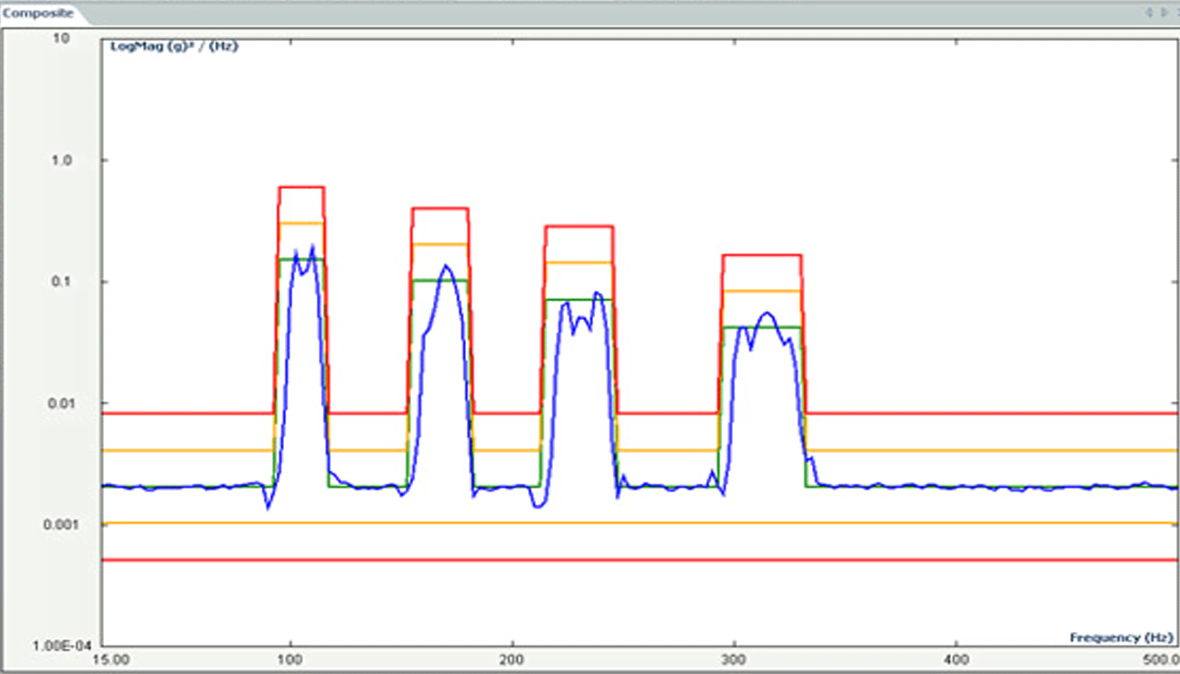RANDOM-ON-RANDOM
VIBRATION CONTROL
A vibration controller feature used within a closed-loop test system to drive shakers by generating a profile that combines broadband random excitation with multiple narrow-band signals.
Solicitar ofertaRandom-on-random (RoR) control simulates real-world complex vibration environments with a combination of a broadband random signal and one or more superimposed random narrow-bands. Both signal types are usually present simultaneously and the narrow-bands can appear at fixed frequencies or sweep over a predefined range. The overall random PSD (power spectral density) shifts with time or is related to a variable-speed device.
In RoR, a more complex function of the basic random control profile, all resonant frequencies of any given payload are excited at once; thus, it is well suited for product qualification and fatigue tests. A typical example is the repetitive stress on a truck’s headlights, as the vehicle changes speed while travelling on rough terrain.
USE SCENARIOS
- Simulation of vibration characterized by a broadband random profile with one or more superimposed random narrow-band signals
- Truck vibration testing during variations in speed
- Testing of caterpillar-tracked vehicles that have two or more drive trains for changing speed and direction, such as bulldozers, tanks and excavators
- Testing of machines with reciprocating or rotating components, such as propeller-driven aircraft
CHARACTERISTICS
In this type of test profile, the broadband signal also consists of a user-specified breakpoint table of PSD versus frequency. Typically, up to 12 narrow-band signals can be concurrently generated, where each band has independently set PSD amplitude, frequency-sweep range and rate. Narrow-bands can be configured both at user-specified fixed frequencies or in sweeping mode.
Slopes and crossover points are automatically calculated by the control algorithm. There is usually a choice to sum the narrow-band and broadband or to use the largest PSD value from the profile. This allows the swept narrow-band to either dominate on a broadband slope or to be reduced where the broadband is higher.
There usually is a harmonic mode, whereby subsequent narrow-bands are configured using integer multiples of the first narrow-band’s frequency parameters.
RoR control contains all of the automatic and manual test controls that are available in the random profile feature. A PSD amplitude versus frequency sweep envelope for narrow-bands is typically included, providing a pre-test validation of the configuration. During tests, individual narrow-bands and the broadband can usually be turned on and off manually, or automatically according to a pre-defined timetable.

Suscríbase a nuestro boletín informativo y recibirá las últimas noticias de B&K sobre sonido y vibración

